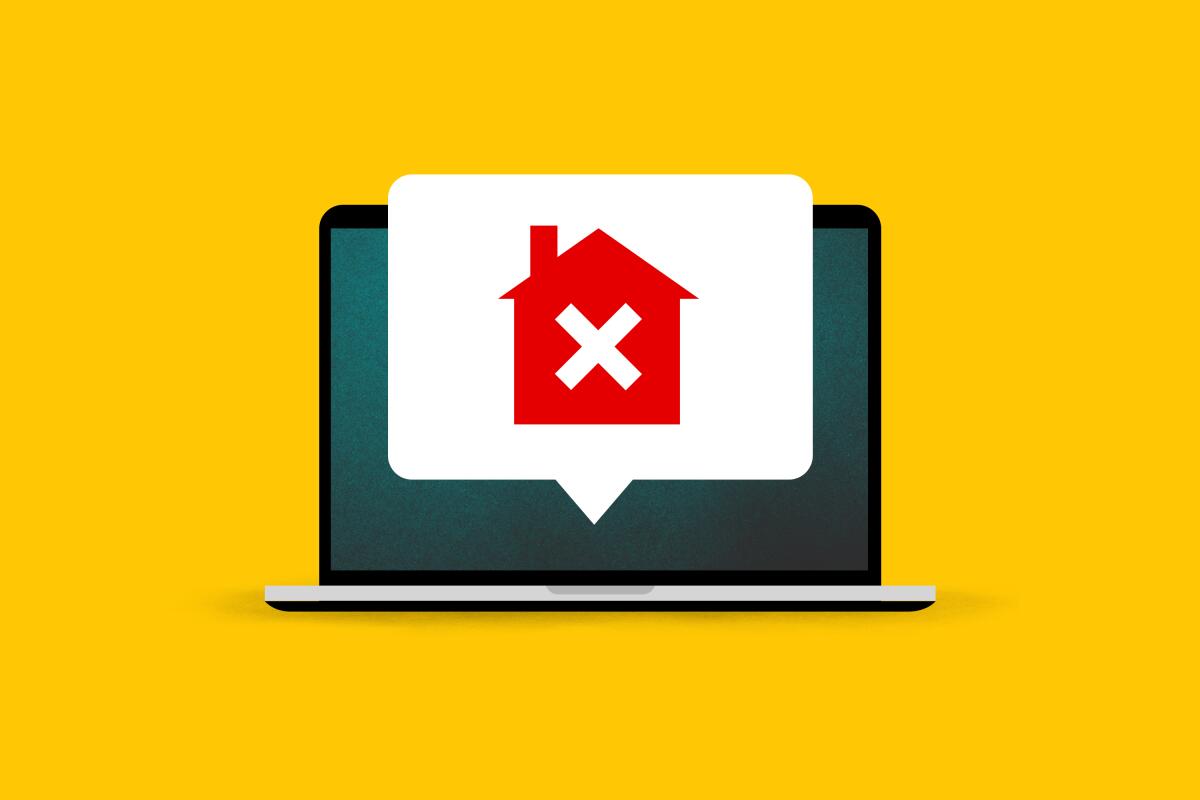Remote workers could be the first to go in the next round of recession layoffs

- Share via
WASHINGTON — Ernanda White’s layoff was sudden and swift. Eight months of steady work ended in a 15-minute Zoom call.
No office goodbyes. No desk to clean out — not for White, who like millions of others across the country had been working from home.
As recession winds blow and the prospect of layoffs grows, many remote workers are beginning to worry about a potential downside to the at-home arrangement that took hold during the pandemic and has continued even as the crisis recedes.
Are those who seldom visit the office and have little direct physical contact with their supervisors more likely to be fired than those who work at desks just a few feet away? Out of sight, out of mind?
The question has taken on new urgency as employers nationwide cut back and policymakers’ strategy for fighting inflation — pushing interest rates ever higher — looks more and more like it will push the economy into a recession.
Data on the issue are almost nonexistent. The next downturn will be the first to occur with so many remote workers in play.
But in one large-scale survey by Beautiful.ai, a maker of business-presentations software, 60% of managers said that remote workers would probably be laid off first.
“Workplace proximity bias could prove to be a troubling issue that managers deal with during this current economic uncertainty,” said Jason Lapp, Beautiful.ai’s chief executive.
“Prejudice against remote workers is obviously not a manager’s intention,” he said, “but sometimes it’s difficult to imagine fair treatment and trust when a batch of employees are working next to you in an office and another group of employees are working at home.”
In White’s case, her former employer, Momentive in San Mateo, Calif., would not say whether remote employees were hit harder than those working on-site.
White, who lives in Dallas, said she had no reason to think so, but added, “I really can’t say.”
The question began to arise early in the COVID-19 pandemic, when working from home came close to being the norm. Some executives and management experts cautioned that it would be easier for bosses to let go of individuals they seldom saw than those they encountered every day.
Others said that even if bias could be avoided, those who were not present would miss out on opportunities to demonstrate their abilities when new and unexpected situations arose in the office.
What is certain is that many workers themselves are worried.
GoodHire, an employment screening firm in Redwood City, Calif., found in a survey that 8 in 10 workers felt working from home would make them more vulnerable in a layoff.
Many fretted that their bosses would view them as lazier or that they would be excluded from important meetings or projects.
A few experts cautioned that it’s too soon to know whether the brunt of job cutbacks will fall on remote workers, noting that companies have an inherent self-interest in keeping high-performing employees, whether they’re in the office or not.
During the pandemic, many employers found remote workers were just as productive, and sometimes even more so.
What’s more, offering people the ability to work from home has been a valuable tool in attracting and retaining talent. Remote workers can be cheaper because many live in lower-cost areas, and companies often pay less based on geographical differences.
“Companies want to operate well, make money and keep people who do a good job,” said Raymond Berti, an employment attorney at Akerman law firm’s office in New York.
Even so, personnel managers say much of the corporate world may be returning to an office culture that favors people working on-site compared with employees in far-flung places.
“During the pandemic, when everyone was working at home, you didn’t have a sense of missing out. Everyone was in the same boat,” said Linda Shaffer, chief people officer at Checkr, GoodHire’s parent firm.
It’s different now, she said, with people working at the office, some at home and more in hybrid situations.

“I don’t feel companies have figured out how to adjust for human behavior … to address human bias,” she said, referring to how managers will decide which workers to let go.
That bias will be that much stronger if it’s coming from top executives, said Andy Challenger, senior vice president at Challenger, Gray & Christmas, an outplacement firm that tracks layoffs. For CEOs who have a strong preference for having people back in the office, he said, letting go of remote workers could be a way of killing two birds with one stone.
“HR leaders know that’s a really bad policy, that it would be a blunt tool,” Challenger said. “But I think some CEOs are following that path.”
There wouldn’t be a legal blowback for companies laying off many more employees who work from home versus other employees. Remote workers, as a class, aren’t protected from employment discrimination, unlike those filing claims on the bases of, for example, race, gender or age.
Remote workers also may not have the same legal right to notice of a layoff under federal and state laws. The so-called WARN Act requires employers to give 60 days’ notice of a mass layoff or plant closing, although there are exceptions. Remote workers fall in a gray area, and neither the courts nor the Department of Labor have made things crystal clear, attorney Berti said.
Meanwhile, even as the labor market has held up remarkably well, layoffs are increasing. The firm Challenger counted almost 30,000 job cuts announced in September by U.S. employers — a 68% increase from the same month in 2021.
Layoffs have surged among tech firms, especially young ones in the San Francisco Bay Area.
In some cases where practically everyone is working from home, it’s easy to know that remote workers weren’t targeted. Also complicating the picture is the fact that often teleworkers are the most recent hires, and those are typically the first to go.
Carol Raymer, a senior recruiter for DocuSign, said her entire 10-person team that focused on senior-level hiring was laid off last month — and everyone had worked at home.
Raymer, who lives in Fullerton, had joined the San Francisco company about 18 months ago. She was hired via Zoom and was laid off in the same way. DocuSign said through a spokesperson that all its employees are considered remote until the company’s currently planned office reopening in February.
But the picture wasn’t so clear with many other companies that had cut jobs recently.
Microsoft, for example, confirmed it laid off almost 1,000 workers. But the company wouldn’t comment when asked whether people working remotely were affected more than those who worked in the office.
If it’s borne out that employees working from home are more vulnerable, it could drive more people to come into the office, although no one expects a return to the old days. About 30% of all paid workdays are being done from home, up from just 5% before the COVID-19 outbreak, according to the Working From Home Research Project.
Many workers have come to value working from home, so much so that 45% said they would take a pay cut to keep working remotely. And about 1 in 3 said they would actually quit or start a remote job search if they were forced to return to the office full time, according to GoodHire’s survey.
Even if teleworking may be less secure in times of a down economy, many say they would still rather work from home because of the life-work balance, and the saved time and expenses from not commuting.
Aware of the need for greater personal connection, White and some of her fellow remote workers in the Dallas area had been planning a get-together to support one another. But they were all laid off before they had the chance.
White, who studied civil engineering and education, still doesn’t see an inherent disadvantage in job security for remote workers.
She is searching for a new job — another fully remote one.
More to Read
Get the L.A. Times Politics newsletter
Deeply reported insights into legislation, politics and policy from Sacramento, Washington and beyond. In your inbox three times per week.
You may occasionally receive promotional content from the Los Angeles Times.











